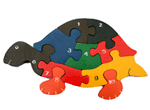The domestic cat (Felis catus) or Felis silvestris catus is a small, usually furry, domesticated, carnivorous mammal. It is often called the housecat when kept as an indoor pet, or simply the cat when there is no need to distinguish it from other felids and felines. Cats are valued by humans for companionship and ability to hunt vermin and household pests.
Cats are similar in anatomy to the other felids, with strong, flexible bodies, quick reflexes, sharp retractable claws, and teeth adapted to killing small prey. Cat senses fit a crepuscular and predatory ecological niche. Cats can hear sounds too faint or too high in frequency for human ears, such as those made by mice and other small game. They can see in near darkness. Like most mammals, cats have poorer color vision and a better sense of smell than humans.
Despite being solitary hunters, cats are a social species, and cat communication includes the use of a variety of vocalizations (meowing, purring, trilling, hissing, growling and grunting) as well as pheromones and types of cat-specific body language.
Cats have a rapid breeding rate. Under controlled breeding, they can be bred and shown as registered pedigree pets, a hobby known as cat fancy. Failure to control the breeding of pet cats by spaying and neutering, and the abandonment of former household pets, has resulted in large numbers of feral cats worldwide, with a population of up to 60 million of these animals in the United States alone, while in Japan they are caught and disposed of.
Since cats were cult animals in ancient Egypt, they were commonly believed to have been domesticated there, but there may have been instances of domestication as early as the Neolithic.
A genetic study in 2007 revealed that domestic cats have descended from African wildcats (Felis silvestris lybica) c. 8000 BCE, in the Middle East. Cats are the most popular pet in the world, and now found almost every place where people live.

















